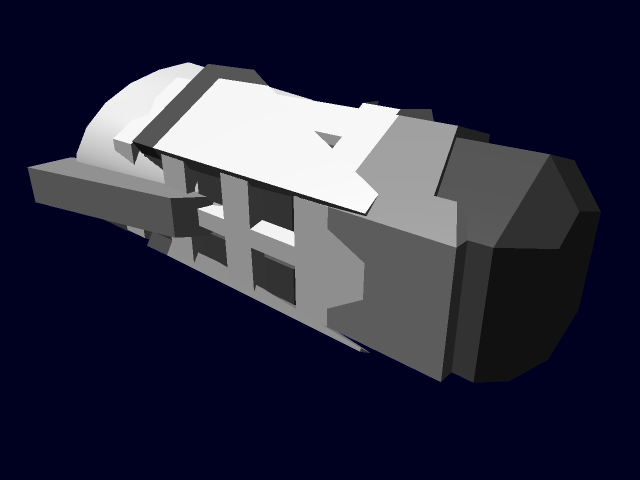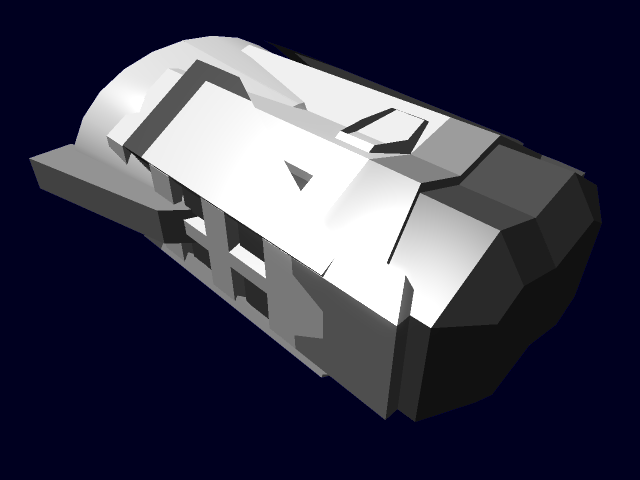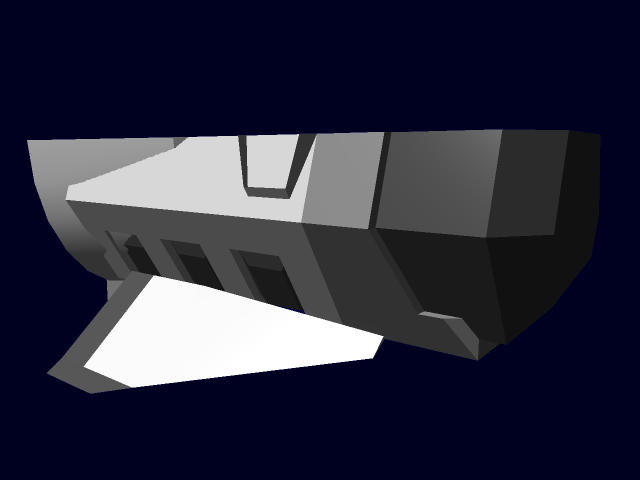Table of Contents
Origin Industries Long Distance Escape Pod
After running long distance operations, Origin Industries discovered that there was a need for long distance, high FTL capable Escape pods, providing a function which Origin Standard Escape Pods simply could not fill. While many other examples had the capability of FTL travel and similar volume to Origin's previous entrant, they did not have the range or the speed to be truly useful for long distance operations, with limitations such as 20 ly range and a speed of 1ly/day. After much consideration, it was decided that the LDEP's would sacrifice internal capacity for high speed FTL travel. the pods were also made half the size, allowing smaller, more efficient FTL systems to be placed on the craft. This led to another interesting side effect, which was the fact that two of these pods could theoretically fit inside existing escape pod mounts, allowing for more escape pods per ship, if still with less capacity than the original kind. The tradeoffs must be considered when installing the pods, as the LDEP's are much more expensive and have much lower capacity than Standard style escape pods.
The LDEP comes in a pair, so as to fit properly in an escape pod slot. Due to the shape of the pods, they are connected by their dorsal surfaces and stuck in the pod slot sideways; for the passengers to get in they must crawl in and lay on their sides, once the pods have been fired and broken free of their mothership's internal gravity, the occupants will be able to properly get into their seats and strap down.
Performance and stats
General
Class: OI-X2-1A Type: Escape Pod Designers: Aerin Tatst Manufacturer: Origin Industries Production: full mass production Fielded by: Origin Industries, Independent
Dimensions (per pair)
Length: 20 feet Diameter: 11 Feet
Performance
- STL Speed: .15c
- FTL Speed: 2000c
- 0.228159105 light-years per hour
- 5.47581853 light-years per day
- Aerial speed: 400 MP/H (dead gliding)
- Capacity: 2 humanoid passengers.
- Range: 200 LY
- Price: 10,000 KS/pair
Systems
Hull: The LDEP has a hull made of Durandium, giving it a lightweight, but tough hull. SP 10
Deflectors: The LDEP uses a light deflector system to protect against objects such as debris and small meteors. SP 10
Gliding wings: There is a pair of small, foldaway gliding wings on each LDEP, to help control the craft in Atmosphere, as well as to help project the deflector shields.
Thrusters: The LDEP carries a number of small thrusters about the hull for light maneuvering while in STL. The thrusters can also facilitate landing on a planet, slowing the LDEP down enough that it does not kill the occupants.
Micro-CDD: The LDEP uses a small version of a CDD, similar to that used by some types of Powered armor. It is capable of pushing the LDEP at 2,000 times the speed of light, for a range of up to 200 lightyears.
Communications: The LDEP carries standard FTL, radio, and laser communications, to aid in rescue. Power for them is stored in a small capacitor, so over-use will result in a total loss of communications.
Power Supply: The LDEP uses several High-volume capacitors to store enough energy to power the CDD and thrusters, as well as the shielding and life support. This power supply is kept active by whatever ship the LDEP is connected to, and can be utilized as emergency power if the ship has the capability to do so, although it may cost the LDEP the capability to use FTL.
Life Support: The LDEP uses a simple oxygen scrubbing system to keep air fresh for up to one month. The pod also has basic rations for 2 people for one month.
Electronics: The LDEP contains a very small Navigational electronics package, including short range (.0001 ly) sensors and a Nav computer, as well as a very basic control stick to allow for manual manuevering in atmosphere.


